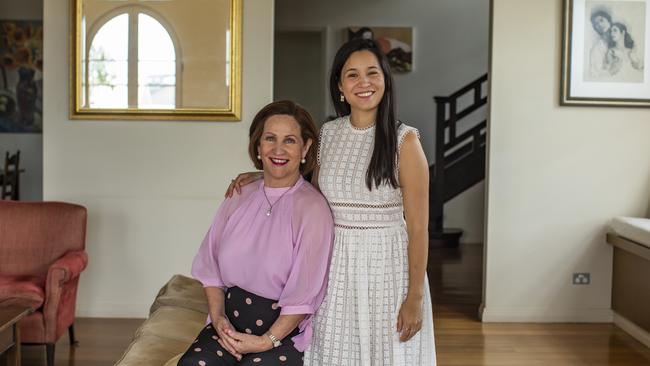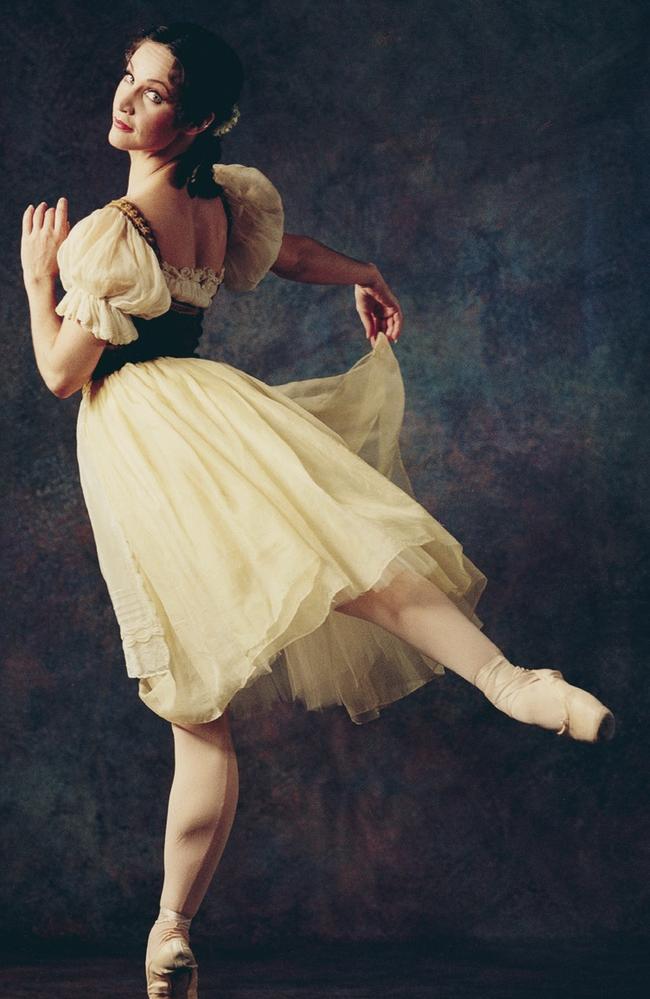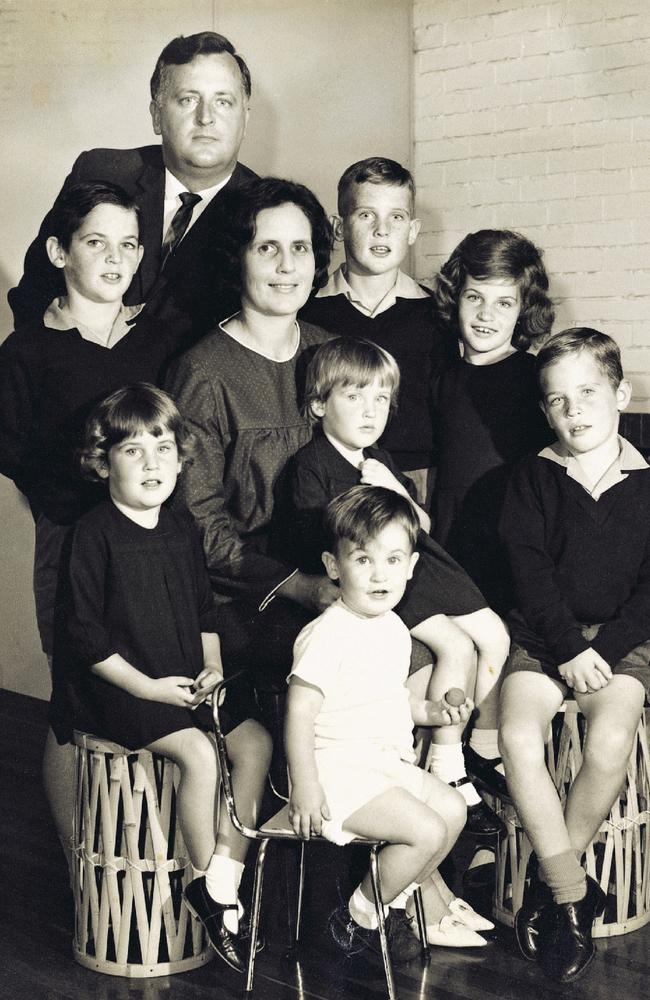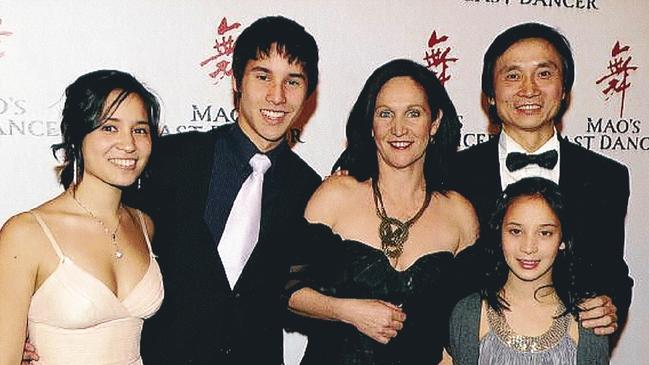Ballet star Mary Li reveals the day her world collapsed
Mary Li reveals how she went from dancing in Rockhampton to the world stage, where she met fellow dancer now husband Li Cunxin, and why she gave it all away.

QWeekend
Don't miss out on the headlines from QWeekend. Followed categories will be added to My News.
When she began writing her autobiography, Mary Li gave what she had written to her daughter Sophie to read.
“I wrote the first bits and pieces and she typed it all up for me,” Mary recalls. “She was laughing hysterically about things from my childhood in Rockhampton and I’d be saying … that’s all true! That’s what really happened! She thought it was hilarious and when I heard that laughter I thought – I’ll write more of that.”

Mary, wife of Queensland Ballet artistic director and best-selling author Li Cunxin, had her own story to tell. That book, Mary’s Last Dance, is out on Tuesday and will be launched by Queensland Governor, the Honourable Paul de Jersey, at a function at Government House in Brisbane followed by a major event at Brisbane Powerhouse the following week.
More than just a sequel to her husband’s 2003 best-selling memoir Mao’s Last Dancer, it fleshes out the family story after years of being hounded (ever so nicely) by her husband’s publishers, who wanted Mary to tell her side of the story.

Li Cunxin’s book was made into a film directed by Bruce Beresford in 2009 and he’s now universally known as Mao’s Last Dancer. Here in Queensland he is revered for turning Queensland Ballet into the powerhouse of the performing arts that it is today. Li, 59, who has written the foreword to his wife’s book (richly illustrated with photos), has done that with Mary, 62, by his side as the company’s ballet mistress and principal repetiteur.
But when he wrote his book he was uncertain how it would go. Readers loved his story of growing up in poverty in China, defecting to the west and marrying prima ballerina Mary McKendry, the girl from Rockhampton who gave it all up to look after the couple’s first child, Sophie, who was born profoundly deaf. There had to be a story in that, right? Well, yes, but Mary didn’t want to tell it.
Mary and Li have three children. Sophie, now 31, who is living in Brisbane and works for online business The Urban List and for the NDIS as a support worker; Tom, 28, a teacher who lives in Melbourne with his girlfriend Mikala and Bridie, 22, who works for a mortgage broker, is studying finance in Brisbane and still lives at home.
It’s a close-knit family and Mary has a special bond with Sophie after everything they have been through together, including collaborating on the book. Mary was reluctant to write it until she penned some memories in longhand and gave them to Sophie to read and her laughter inspired Mary to continue.

The story of Mary’s early life is funny and heart-warming, growing up in Rockhampton in Central Queensland in a large rambunctious family (there were eight kids) living the Australian dream, the one you only see in old movies. It was an idyllic childhood with supportive parents, mum Coralie and dad, architect Neil George McKendry (who designed the city’s Pilbeam Theatre) who served as quartermaster for his tribe of kids.
“To cater for our large family, dad bought an oversized industrial stove. It had two ovens, six burners and ran the length of one entire wall in the kitchen. We also had three fridges, with one dedicated to meat: Neil George would make a trip down to the butcher to buy half a beast that would feed us for eight weeks.”

This was the era of churchgoing, Sunday lunches and swinging on the Hills hoist for fun.
Mary’s Dad drove her to her early ballet classes and fuelled his daughter by cooking her lamb chops and bacon for breakfast.
Sophie Li thought recollections like that were gold and she has a good eye. Because Mary Li’s recollections of her younger years in regional Queensland are charming and set the scene for the rich life that followed – moving to London to study at the Royal Ballet School aged 16, dancing with the London Festival Ballet (now English National Ballet), then Houston Ballet before giving it all up to look after Sophie.

The bond between mother and daughter is close and at the Li home in Brisbane’s inner north there seems to be a lot of the love in the living room – Mary beaming at her beautiful daughter, Li Cunxin sitting quietly aside (leaving the limelight for his wife) keeping an eye on the dog, Nala, while we chat.
Although Li does point out that Mary’s book was in demand long before it was written.
“Seventeen years ago when my book was published a lot of readers asked – can we hear Mary’s story next?” Li says. “A few articles appeared about her and Julie Watts, who was senior editor at Penguin at the time, encouraged Mary. There is more interest from booksellers for her book than there was for mine. They had to increase the print run of Mary’s book because of the demand.”
But it’s not a competition, as Sophie Li points out. “One thing you need to know about my parents is that they are not jealous of each other,” Sophie insists. “They have no ego and I admire that. Dad doesn’t care, Mum doesn’t care. And Dad helped too. At first it was just Mum and me but when we couldn’t remember something, I’d say, ‘Hey, Dad, do you remember what happened when I was eight?’”
Sophie helped her mum but she tried not to get in the way.
“I wanted her to write her own story,” Sophie says. “I’m glad she has done it. It’s confronting at times but it’s honest, sometimes brutally honest. There was a lot of interest in Dad’s story and in Mum and us. I was adamant that I didn’t want a book written about me but now that I’m older I think there’s a lot that can be learned and gained by this. As Mum says, there isn’t a good story like this about what it’s like growing up deaf.”
Mary Li says Sophie’s deaf friends can’t wait to read the book.
“Because it’s all about them too,” Mary says. “I didn’t worry about what the reaction would be from the deaf community because I trusted Sophie when she told me they were desperate to hear this story. When I had Sophie there was nothing to read, no internet, no books, nothing and there is still very little. People are desperate for information.”

When Sophie was born, Li and Mary were darlings of the ballet world and Mary tells the story of her road to ballet success and it’s something of a blueprint for aspiring dancers.
Mary started dancing at eight and was swept up in ballet by the time she was a teenager under the tutelage of her much-loved teacher, Valeria Hansen.
“I was rarely at home,” she writes. “I worked hard in ballet. I was organised and I was as happy as could be. I loved Miss Hansen … You always knew you were good enough to go on stage after working with her.”
Mary auditioned for the Royal Ballet School, was accepted and left Rockhampton for England in 1975 at just 16. She chronicles her early years in London where she went on to become a star with the London Festival Ballet and writes of her first encounter with one of the greatest ballet dancers in history.
“I discreetly observed other dancers, and then I saw a man striding across the studio in a woollen hat, fur coat, boots and scarf. I instantly knew it was Rudolf Nureyev! Oh my god! Was I going to do my audition class with this famous star?!”
That was just the beginning of a glittering career for young Mary McKendry who was then poached by the Houston Ballet in the US after nine years with London Festival Ballet.
She met Li Cunxin early on in Houston and wanted to know more about him.
“There was obviously much more to his story,” she writes. The two were soon paired on stage under the eye of artistic director, world-renowned choreographer and still close family friend, Ben Stevenson.
“And Li and I really loved working together,” Mary’s memoir reveals. “The chemistry between us lingered beyond the stage. To be honest, my connection to him was instant, and I had the impression it was the same for him.”

Other relationships fell away and their stage partnership was like a fairytale come true.
After Sophie’s birth everything was going swimmingly at first.
Mary’s memoir is very frank about the circumstances surrounding the discovery that Sophie was deaf when they had her examined by a specialist. “How is she, doctor? asked Li anxiously. Without any preamble, the specialist said, ‘Your daughter is profoundly deaf.’ Just like that, he delivered his verdict.”
With that diagnosis Mary’s world collapsed and she had to reconsider her career.
She soon decided she had to give up dancing. She walked off stage after a performance in Toronto in 1991 thinking that was her last dance. But back in Houston she was convinced to do a final performance there, in The Nutcracker, with Li Cunxin by her side. “That night,” she writes, “the curtain finally came down on my dancing career”.
The Li’s moved to Melbourne from Houston with Li dancing with the Australian Ballet and Mary teaching dance, eventually coaching with Li at The Australian Ballet.
Finally he retired too, as dancers must, and he found another career as a stockbroker and best-selling author.
Through all these years Mary was busy bring up three children and helping Sophie navigate the world. She details their experiences with hearing aids, Cochlear implants and while Mary and Li had little knowledge of the world of the deaf, they did their best. The struggles that Mary and Sophie shared are as heartbreaking at times as they are heartwarming.
As Sophie grew older there were arguments about whether to rely on implants or whether Sophie should learn to sign too, which was contentious. There was friction between mother and daughter over the way forward.
It’s all in the book and Sophie is comfortable with that. “I’m not nervous about people knowing my story,” Sophie says. “The fact that my parents grew up in the spotlight meant that people knew about me by association so I’ve grown accustomed to the attention although there were times when I didn’t like it.”

Li Cunxin points out that he and Mary tried to keep family life in the real world private.
“With my book and the movie there were lots of requests for the children to be interviewed,” Li says. “But we shielded them from the spotlight.”
The last part of the book is about their time at Queensland Ballet and their final performance together again, an encore that came a couple of decades after they both stepped off the stage for what they thought was for good.
Then, in 2017, a sensation rocked the ballet world – Li and Mary would be on stage together again for one night only in Brisbane in The Nutcracker with Li playing the magical Herr Drosselmeyer with Mary in a character role.
What followed was agony for Li (he grimaces recalling how it rekindled old injuries) but ultimately, a triumph.
“After many curtain calls we returned to our dressing rooms, exhausted but so alive,” Mary writes. “All the staff clapped and smiled as we walked by. We felt like royalty! Bridie came backstage in tears, completely overcome – she had never seen either of us dance before.
Sophie just said, ‘Dad, it was great, but please don’t do that again!’”
Always the voice of reason, you can understand why Mary Li relied so much on her eldest daughter when writing her autobiography.
“Having Sophie editing it with me was the greatest joy of my life,” Mary says.
And amid the tears and struggles that joy is evident on every last page. ■
Mary’s Last Dance by Mary Li, Viking, $35. Also available as an ebook and Audiobook via Audible
